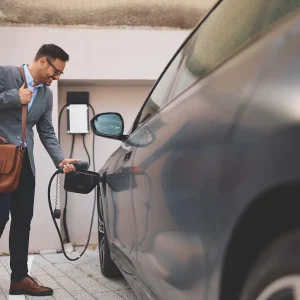You may think all leasing deals are identical, but no two are exactly the same, and the devil is in the detail. Tom Webster reports
A limp handshake after handing over the cash – in days gone by, that’s about as far as your relationship would go with the supplier of your business car fleet.
On top of that, the car’s warranty might have only lasted for a year. And, as there was no guarantee the car itself would remain in showroom condition much beyond that time, finding a trustworthy local garage that could keep your wheels turning was of paramount importance.
How times have changed. Now, you need never meet the dealer in the sheepskin coat, let alone the mechanic in his oil-stained overalls.
That’s because a leasing company will take care of almost everything for you, including the costs involved with running a business car.
On the other hand, though, this can bring its own difficulties.
“Running a fleet of company vehicles is a complex process and there are a range of costs to consider within a lease rate,” says Gary Burns, head of fleet products at leasing company Arval.
“The most obvious are the direct ones: depreciation, the maintenance and repair of the car, road fund licence, interest and tax.”
Which may seem obvious, but it’s worth double-checking the details. For example, is the interest rate competitive, and is it fixed or variable throughout the contract?
Wear and tear
When it comes to maintenance, certain businesses will need more of particular items due to the nature of their fleet – rear-wheel drive cars will eat tyres faster than 4x4s, for example. So, it’s always sensible to enquire if expendable items such as tyres or light bulbs are included in the cover, and if so, whether there is a limit to how many can be provided.
Often you’ll find that a leasing company will not cover damage caused by driver neglect, which can include punctures caused by hitting a kerb. But do you know what are the precise restrictions on damage repair?
And what about roadside recovery? With both leasing companies and car manufacturers providing breakdown assistance, you could be covered twice, which is unnecessary.
Sold on service?
Is it worthwhile including service and maintenance in your lease rate? On the one hand, you could argue against the payments on the grounds that you think you might end up paying for the work but not get full value for money in the long run.
However, unlike travel insurance – which you pay out for and never claim on – maintenance instalments will cover costs that are guaranteed to emerge over a car’s lifetime.
“A maintenance package includes routine servicing, mechanical repair, tyres, glass, breakdown assistance and vehicle recovery,” says Arval’s Burns.
This is not the case everywhere, though, and different leasing companies include different options. For example, you may find that cover can extend to the replacement of items that would not normally wear out, such as cylinder heads.
Such items do not degrade over the first few months of a car’s life, and Steve Jones, head of pricing for the BusinessCar award-winning leasing company Lex, says a fleet manager will really only reap the benefits of a maintenance package in the agreement’s third year.
“We calculate the costs and it tends to work out that one sixth of the money is spent in the first year, a third in the second and half in the third year,” says Jones.





